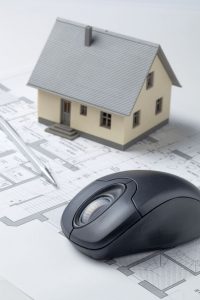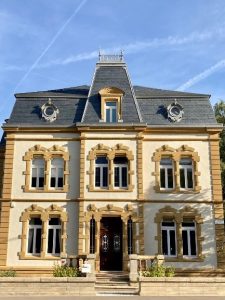Authorization to build

A. A building permit (article 66.1. of the RBVS) must be requested, in particular
-
for all new construction;
-
for any demolition, even partial, of an existing construction;
-
for any change of use of a building and for any change in the number of dwellings;
-
for all extensions, elevations and transformations of existing buildings;
-
for all other modifications to exterior walls, load-bearing elements and roofs, or to the use of the premises;
-
for the installation of signs and billboards;
-
for the installation of cornices, eaves, awnings and other similar architectural elements, encroaching wholly or partially on the public domain;
-
for the establishment and modification of fences of any kind along the public domain, as well as any fence located less than 2.00m from the public domain;
-
for the construction of wells, water tanks, water silos, fodder silos, manure and slurry pits;
-
for excavation and backfill work, construction and demolition of separation or retaining walls and exterior landscaping work;
-
for the installation of tanks for liquid fuels and chemicals or other hazardous substances;
-
for the construction of swimming pools, natural pools and ponds;
-
for the installation of solar collectors and heat pumps;
-
the installation of a roof window (e.g. Velux);
-
the repair of a facade such as painting or an energy repair;
-
for all work undertaken on the exterior of a building located in the “protected area of communal interest” of the general development plan or on land subject to an “urbanistic easement – built environment type” of the specific development plan – existing neighbourhood.
B. A declaration of work (Section 66.1. of the RBVS) shall be requested, in particular for:
-
minor maintenance work performed on buildings, including re-roofing, except as provided in item #16 above;
-
the installation of scaffolding on private property.
The municipalities, through their general development plans (PAG), must identify and protect buildings of local interest. In order to establish a coherent and consistent protection for all the built heritage, including that which is of particular importance at the communal and local level, the identification of the built heritage worthy of protection has been carried out for the whole of the Grand Duchy, together with the communes, their engineering offices and the National Institute for Architectural Heritage – INPA (formerly the Service des sites et monuments nationaux). In parallel to this vast analysis and the communal protections that follow, the State, through the INPA, has been able to significantly expand the list of objects benefiting from national protection and begin the scientific inventory of built heritage.
Buildings and objects with national protection
For the restoration of protected heritage, namely buildings classified as national cultural heritage or located in a protected area of national interest, the experts of INPA must be requested. At best, INPA’s advice is given at the beginning of the planning of the work.
The buildings classified as national cultural heritage cannot be modified without the authorization of the Minister of Culture. Projects that require modifications by the owners are reviewed by the national INPA and the Cultural Heritage Commission (COPAC), which advise the Minister.
During the works, the owners, their architects and tradesmen are accompanied by INPA experts.
Financial assistance of up to 50% of eligible costs may be granted for the restoration of protected buildings.
Buildings protected as “building to be preserved” in the PAG of Mondorf-les-Bains
Article 129 of the law of 25 February 2022 on cultural heritage:
(1) Without prejudice to the measures applicable to land use planning and municipal planning, the owner of an immovable property which, on the day of the coming into force of this Act, is designated as a building to be preserved by a general development plan of a municipality, shall inform the Minister of any plans to demolish or partially demolish and to convert the building to be preserved, at the latest at the time of the application for a building permit or demolition permit
This information obligation remains in force until the inventory of the architectural heritage for the municipality in which the property is located has been published in accordance with Article 25, paragraph 1.
(2) Once informed, the Minister may, within three months, initiate an individual classification procedure for the real property in question in accordance with the procedure set out in the following sections. After this period, the project is deemed to be approved.

PAG of the commune on Geoportail :
Useful links :
www.inpa.lu
www.inra.lu
www.pch.gouvernement.lu
www.emwelt.lu

